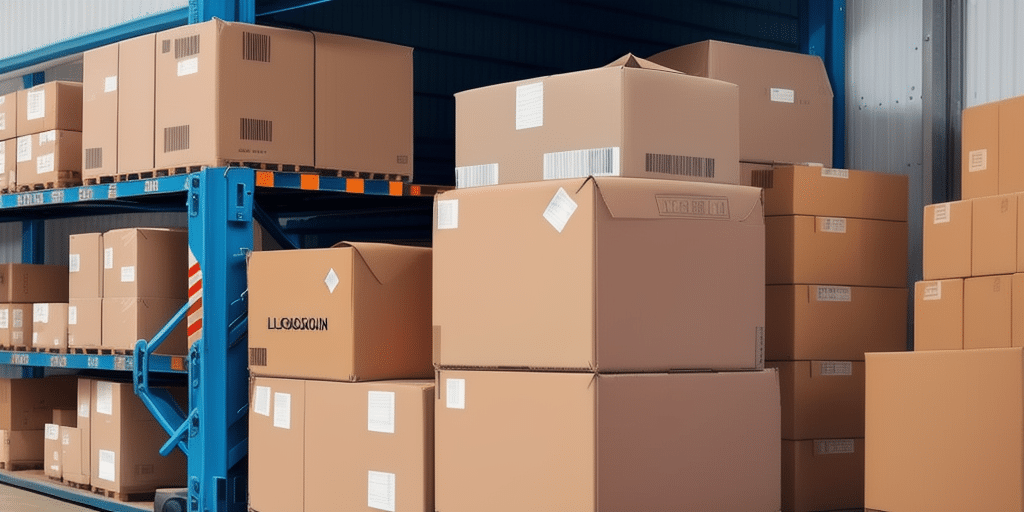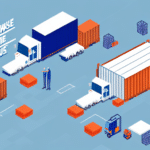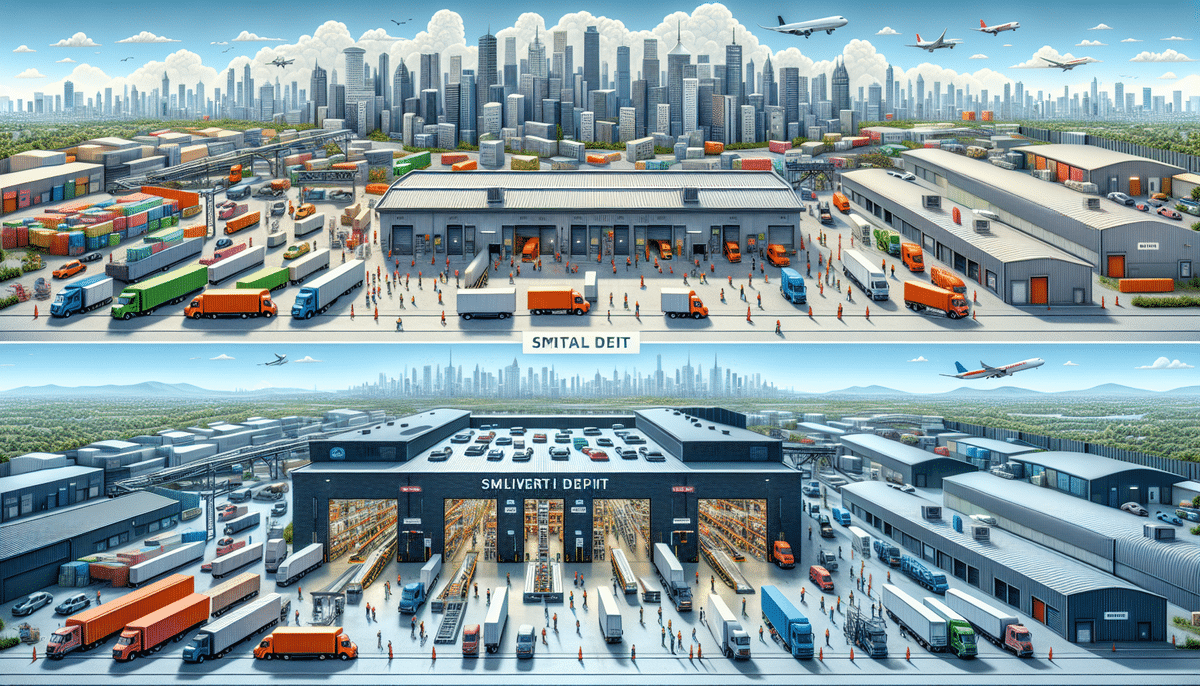What Are Inbound Logistics? Exploring the Basics of Inbound Logistics
Inbound logistics involves the management of the transportation, storage, and delivery of goods and materials from suppliers to a company's warehouses or production facilities. As a critical component of supply chain management, inbound logistics ensures that operations run smoothly and efficiently. This article delves into the fundamentals of inbound logistics, highlighting its importance, key components, the role of technology, best practices, common challenges, and future trends.
The Importance of Inbound Logistics in Supply Chain Management
Effective inbound logistics management is essential for maintaining seamless production processes and ensuring that customers receive products in a timely and cost-effective manner. By coordinating and optimizing the movement of goods from suppliers to production facilities, companies can:
- Improve Inventory Management: Efficient inbound logistics reduces the need for excessive inventory, leading to significant cost savings. According to a [Study by the American Supply Chain Association](https://www.ascm.org), companies can reduce inventory costs by up to 20% through optimized inbound logistics.
- Enhance Productivity and Profitability: Streamlined operations lead to increased productivity and higher profitability by minimizing delays and reducing operational costs.
- Ensure Regulatory Compliance: Proper management ensures adherence to safety, environmental, and labor regulations, helping companies avoid fines and maintain their reputation.
Key Components of Inbound Logistics
Transportation
Choosing the most appropriate mode of transportation—whether by road, rail, air, or sea—is crucial for timely and cost-effective delivery of goods. Factors such as distance, cost, and the nature of the goods determine the best transportation method.
Inventory Management
Effective inventory management tracks goods in transit and ensures the availability of materials when needed. Implementing techniques like Just-In-Time (JIT) can minimize inventory holding costs and reduce waste.
Warehousing
Optimizing warehouse layout and storage solutions facilitates efficient handling and distribution of materials. Advanced warehouse management systems (WMS) can enhance accuracy and speed in operations.
Material Handling
Efficient material handling processes involve the movement, protection, storage, and control of materials throughout their lifecycle. Automation and robotics are increasingly used to improve speed and reduce errors.
Supplier Management
Building strong relationships with suppliers ensures a reliable supply of high-quality materials. Effective supplier management can lead to reduced lead times, better pricing, and improved product quality.
The Role of Technology in Inbound Logistics
Technology plays a pivotal role in optimizing inbound logistics by providing real-time visibility and enhancing coordination. Key technologies include:
- GPS Tracking: Enables real-time monitoring of shipments, ensuring timely deliveries and allowing for proactive issue resolution.
- Warehouse Management Systems (WMS): Streamline warehouse operations, improve inventory accuracy, and enhance overall efficiency.
- Transportation Management Systems (TMS): Optimize routing, manage carrier relationships, and reduce transportation costs.
- Artificial Intelligence (AI) and Machine Learning: Analyze data to predict demand, optimize inventory levels, and identify potential disruptions before they occur.
According to a [Gartner report](https://www.gartner.com), companies that implement advanced technologies in their inbound logistics can achieve up to a 30% increase in operational efficiency.
Best Practices for Efficient Inbound Logistics Management
Develop Strong Supplier Partnerships
Collaborating closely with suppliers fosters trust and reliability. Establishing clear communication channels and mutual goals can enhance supply chain performance.
Implement Effective Inventory Management
Utilizing inventory management systems and forecasting tools ensures that materials are available when needed without overstocking. Techniques like JIT can significantly reduce inventory holding costs.
Leverage Data Analytics
Analyzing data from various sources helps identify inefficiencies and areas for improvement. Data-driven decision-making can lead to more accurate demand forecasting and better resource allocation.
Adopt Sustainable Practices
Incorporating sustainability into inbound logistics, such as using eco-friendly transportation methods and reducing packaging waste, not only benefits the environment but can also lead to cost savings. A [2023 Deloitte report](https://www2.deloitte.com) highlights that sustainable logistics practices can reduce operational costs by up to 15%.
Utilize Advanced Technologies
Investing in technologies like RFID and automated material handling systems can enhance efficiency and accuracy in inbound logistics operations.
Common Challenges in Implementing Inbound Logistics Strategies
Despite the benefits, companies may encounter several challenges when implementing inbound logistics strategies:
- Global Supply Chain Complexity: Managing suppliers across different countries involves navigating diverse regulations, tariffs, and customs procedures, which can lead to delays and increased costs.
- Unexpected Disruptions: Natural disasters, labor strikes, and geopolitical tensions can disrupt supply chains, making it difficult to maintain consistent operations.
- Visibility and Control: Limited visibility into suppliers' operations can result in delays, quality issues, and difficulties in managing inventory levels effectively.
- Regulatory Compliance: Ensuring compliance with varying regulations across regions requires robust systems and continuous monitoring.
How to Optimize Your Inbound Logistics Operations for Cost Savings
Optimizing inbound logistics can lead to significant cost savings through various strategies:
Reduce Transportation Costs
- Consolidate Shipments: Combining multiple shipments into a single delivery can lower transportation costs and reduce carbon emissions.
- Optimize Routing: Using route optimization software can minimize fuel consumption and improve delivery times.
Enhance Communication and Collaboration with Suppliers
Sharing demand forecasts and production schedules with suppliers enables better planning and reduces the need for expedited shipping. Collaborative planning can lead to more efficient inventory management and lower costs.
Implement Robust Management Systems
Utilizing comprehensive inbound logistics management systems allows for real-time tracking of shipments, monitoring of inventory levels, and effective management of supplier relationships. These systems facilitate data-driven decision-making and identify areas for operational improvements.
Future Trends and Predictions in Inbound Logistics
The landscape of inbound logistics is evolving with several emerging trends that are set to shape its future:
- Artificial Intelligence and Automation: AI-driven analytics and automation technologies will continue to enhance efficiency and accuracy in inbound logistics operations.
- Sustainability and Green Logistics: Increasing emphasis on environmental responsibility will drive the adoption of sustainable practices, such as electric vehicles and renewable energy sources in logistics.
- Blockchain for Supply Chain Transparency: Blockchain technology will provide greater transparency and traceability, enhancing trust and reducing fraud in supply chains.
- Internet of Things (IoT): IoT devices will offer real-time data on shipments, enabling proactive management and quick response to any issues.
- Resilient Supply Chains: Companies will focus on building more resilient supply chains to better withstand disruptions and adapt to changing market conditions.
Staying abreast of these trends and integrating relevant technologies can provide companies with a competitive edge in managing inbound logistics effectively.
Conclusion
Inbound logistics is a vital aspect of supply chain management, encompassing the efficient transportation, storage, and delivery of goods from suppliers to production facilities. Effective management of inbound logistics leads to improved inventory control, cost savings, enhanced productivity, and regulatory compliance. By leveraging advanced technologies, adopting best practices, and addressing common challenges, companies can optimize their inbound logistics operations. Furthermore, staying informed about future trends ensures that businesses remain competitive and resilient in an ever-evolving market landscape.






















